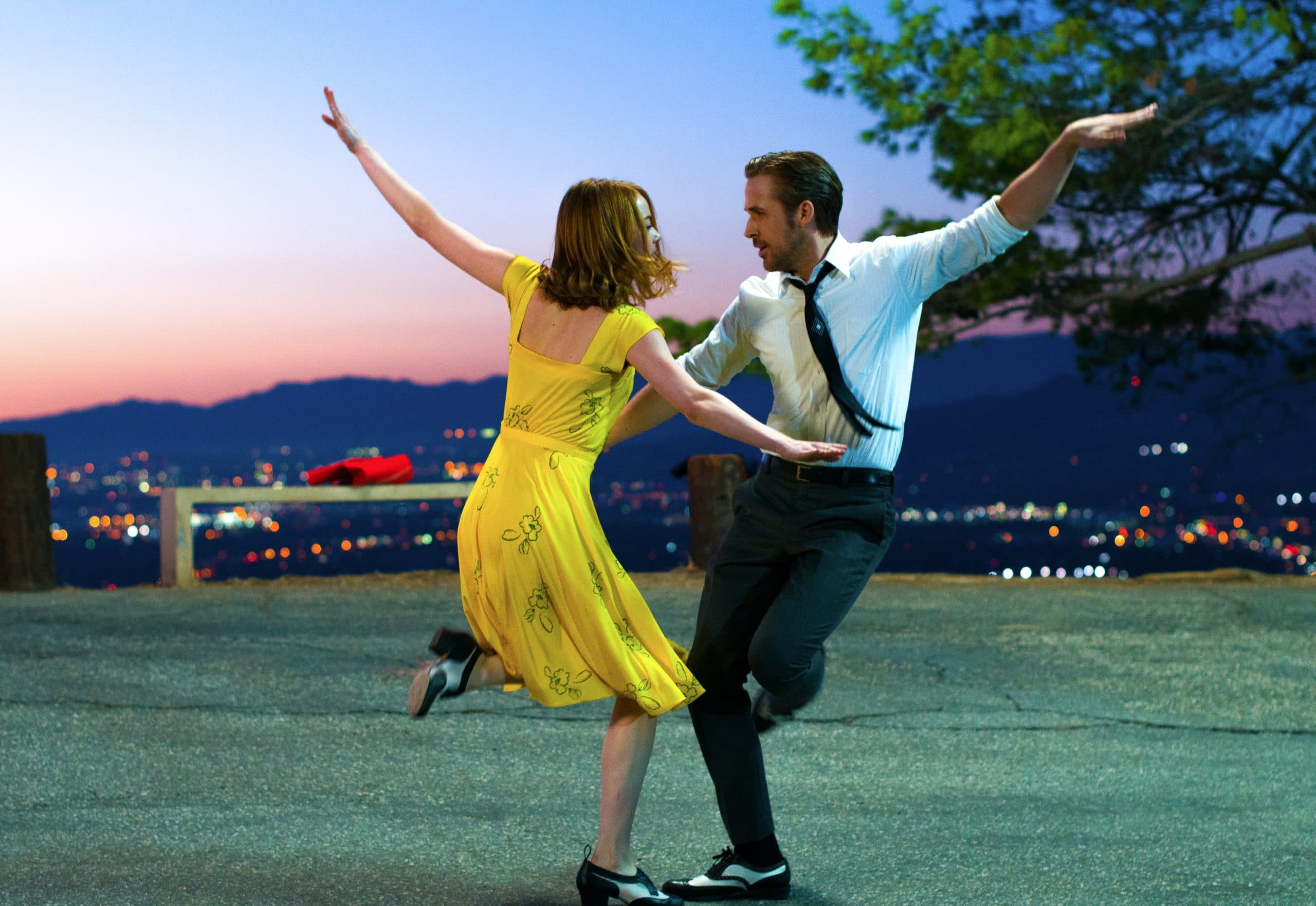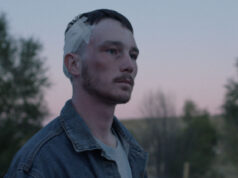La La Land is a lovely and colorful tribute to old classic Hollywood musicals, even though it doesn’t have what it takes to be just as memorable
La La Land (2016)
Written and directed by Damien Chazelle. Starring Ryan Gosling, Emma Stone, John Legend, Rosemarie DeWitt, Finn Wittrock, J. K. Simmons and Tom Everett Scott.
La La Land is such an easy movie to fall in love with. Just take a look at how colorful, adorable and unabashedly romantic it is in its attempt to recapture the old “magic” of Hollywood’s Golden Age musicals (which it clearly believes to be gone from modern films). Dealing with feelings that we can all relate to, the film dazzles us with gorgeous visuals and lovely songs that will probably leave a lot of us humming for hours after it is over. Even so, it is a pity that it is not as consistent as the classics it pays tribute to, nor as memorable. In fact, La La Land doesn’t even come close, and the comparison (given the film’s own nature) is unfortunately inevitable. But we only realize how flawed it really is after we have left the theaters.
Written and directed by Damien Chazelle (Whiplash), La La Land follows aspiring actress Mia (Emma Stone) and jazz musician Sebastian (Ryan Gosling), who fall in love in modern day Los Angeles while trying to pursue their dreams. Both love the Hollywood of old times (Mia even has a large poster of Ingrid Bergman on her wall) and are frustrated with how hard it is to make it in the City of Stars. But this is exactly what musicals used to do and what La La Land wants: to make the impossible possible, using a lot of magic and optimism. And so, this sweet love story turns out to be a bit more than an excuse for the film to amaze us with delightful musical numbers about dreams and how they can come true if we truly believe that.
Presented in CinemaScope with a 2.55:1 aspect ratio and shot on film instead of digital cameras in order to evoke the genuine feel of watching old Hollywood musicals, La La Land looks magical. The opening sequence, for instance, is an elaborate ensemble number that takes place in the middle of a traffic jam on a Los Angeles highway, made of three shots that were edited to look like a single six-minute long take. The camera slides impressively through numerous cars and drivers as they get out of their vehicles and start to sing and dance about their aspirations in Hollywood with a jaw-dropping choreography. It is a fantastic overture involving 60 cars, 30 dancers and 100 extras, and it tells us right away what the film is about.
Using intense colors and long takes in the musical numbers, Chazelle and cinematographer Linus Sandgren make it all look like a sophisticated, modern fable. The moment when Mia and Sebastian sing and tap dance at dusk, for example, is like something out of a dream with its charming lampposts and a purple and blue Los Angeles sky as the backdrop. The production and costume design also use mostly saturated basic colors, with Mia wearing a canary yellow dress in that scene, while in a previous one, her friends appear in different vibrant colors (red, yellow and green) that complement her blue dress. Notice also how Mia stands right inside a red neon square frame the first time she hears Sebastian playing the piano in the bar, which offers an elegant illustration of the way she feels about her own life.
Emma Stone, by the way, does a fine job composing this character full of hopes and dreams. Tired of going to auditions and more auditions that lead nowhere, Mia is an authentic dreamer who already feels the weight of frustration sinking in. And Stone has an excellent chemistry with Ryan Gosling, with whom she even co-starred in two other movies before (Crazy, Stupid, Love and Gangster Squad). Gosling, in turn, is great as the cynical Sebastian, an obvious alter-ego of Chazelle with a purist view of what “real” music is. He drives a vintage car, wears classic clothes and is clearly voicing Chazelle’s opinions when he criticizes the artificiality of modern music and wants to teach Mia about the wonders of jazz.
This brings us to one of the film’s most glaring problems: no matter how well-intentioned and passionate Chazelle is about the old days of Hollywood, he sounds somewhat pretentious and arrogant. I mean, who is he to decide what music and cinema are supposed to be? Besides, La La Land is old-fashioned even in the way it places white people at the center of everything, ignoring the fact that jazz originated among African Americans. Seeing a white man like Sebastian talk about his mission of “saving” jazz while black men are kept out of focus playing in the background is a bit outrageous. Not to mention how Mia hates jazz and Sebastian is, of course, the one to convince her she should like it.
Full of references and with a structure divided in seasons to reflect the characters’ feelings and their relationship, La La Land is more like a salad of clichés, and they include the “couple who hate each other only to find out that they are in love;” a first kiss that gets interrupted; and, of course, an important commitment that comes up for one in the most important day of the other’s life. The film is also far from being as witty as it believes to be (the dialogue can be quite pedestrian) and just seems tailor-made to win awards. In other moments, though, the clichés are appropriate, like when we see a closed down cinema, a vinyl record that stops playing or a magical scene with the two floating over clouds at a planetarium.
But Chazelle compensates for the script’s obvious weaknesses with a splendid direction. Take, for instance, the moment when Mia is with her boyfriend Greg and his friends at a restaurant. We barely see Greg’s face, and the scene is shot in shallow focus, keeping only Mia entirely visible and underscoring her mental absence from that which is one of the dullest conversations of her life. Likewise, when auditioning, she is framed in close-ups while everything else is blurred, which reinforces how nervous she is and the lack of warmth from the people who are there to evaluate her. And in a quick reference, Chazelle even makes the names of bars, clubs and restaurants pop up in rapid succession on the screen just like in Singin’ in the Rain (1952).
Whereas most of the songs in La La Land are far from memorable, it is interesting to see how Chazelle combines the aesthetics of old classic films with a modern approach — and Tom Cross’ fantastic editing is full of elegant dissolves to indicate time ellipses as well as modern fast cuts and quick inserts. Offering us a beautiful final sequence conceived to draw tears from everyone in the audience, La La Land is basically a conventional hodgepodge that wants to be the musical of musicals, aiming at the status of sophisticated when in fact it is nowhere near as remarkable as the films it references. But at least it is delightful enough to be worth our time.





